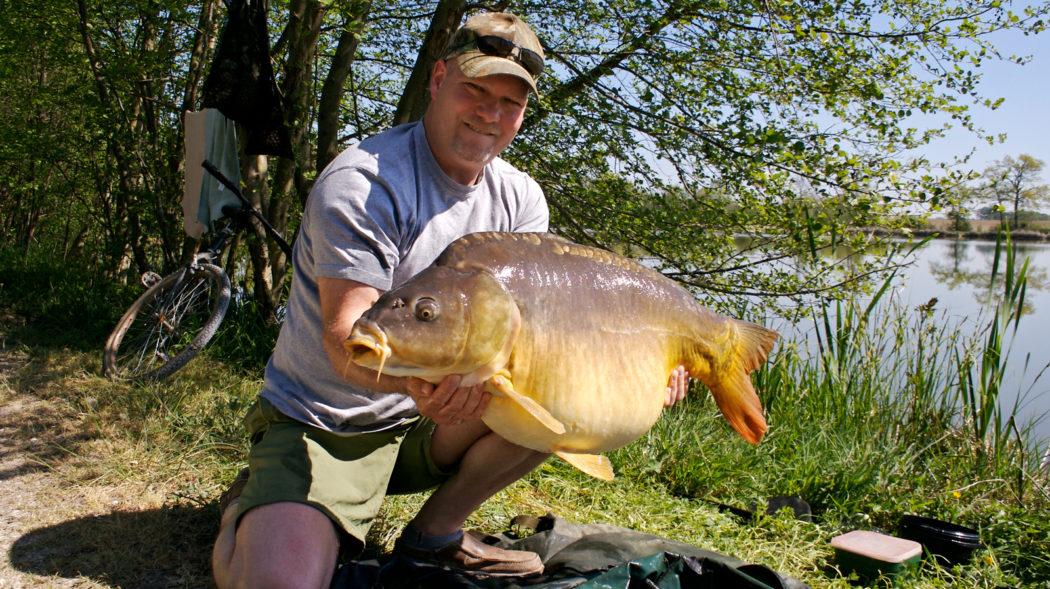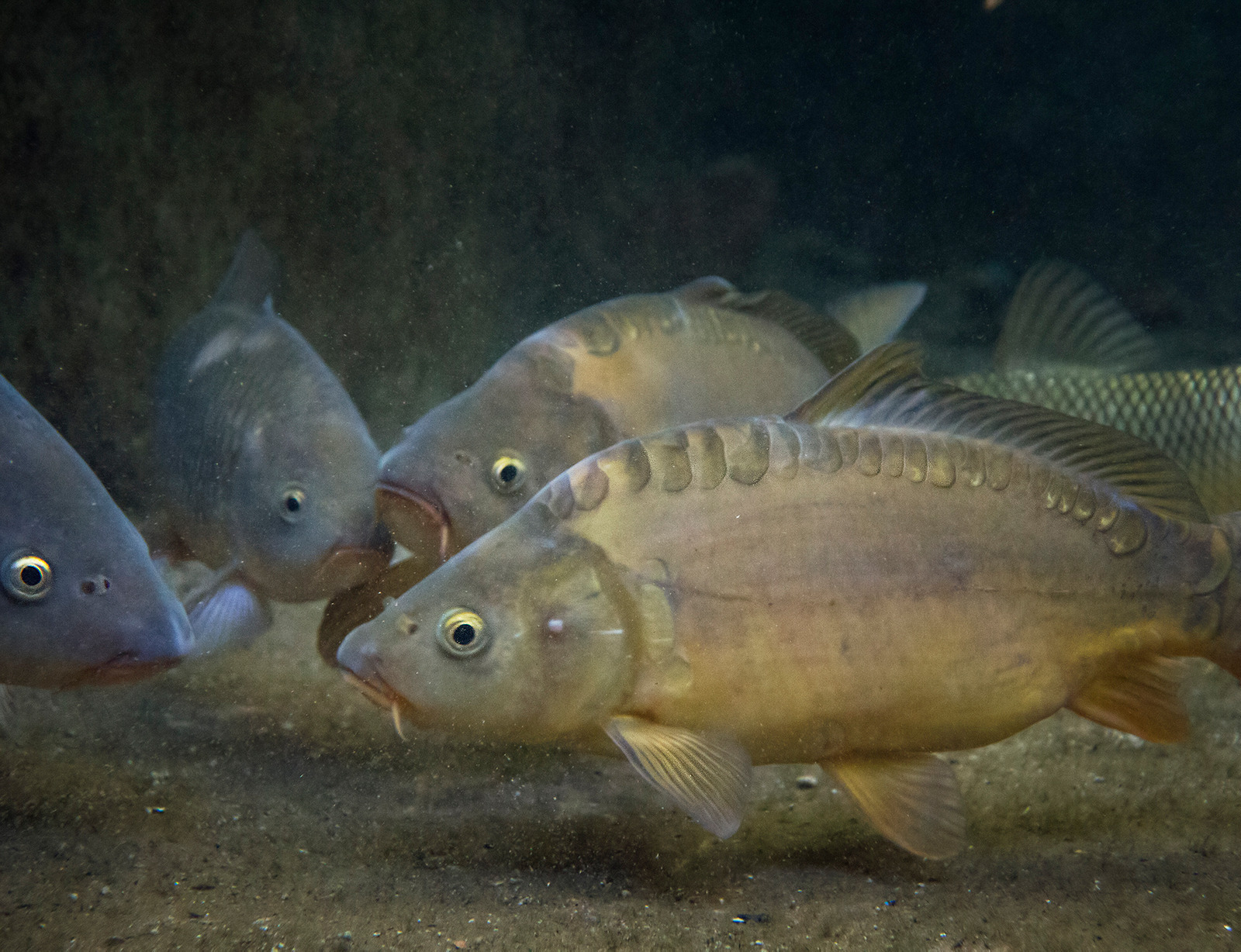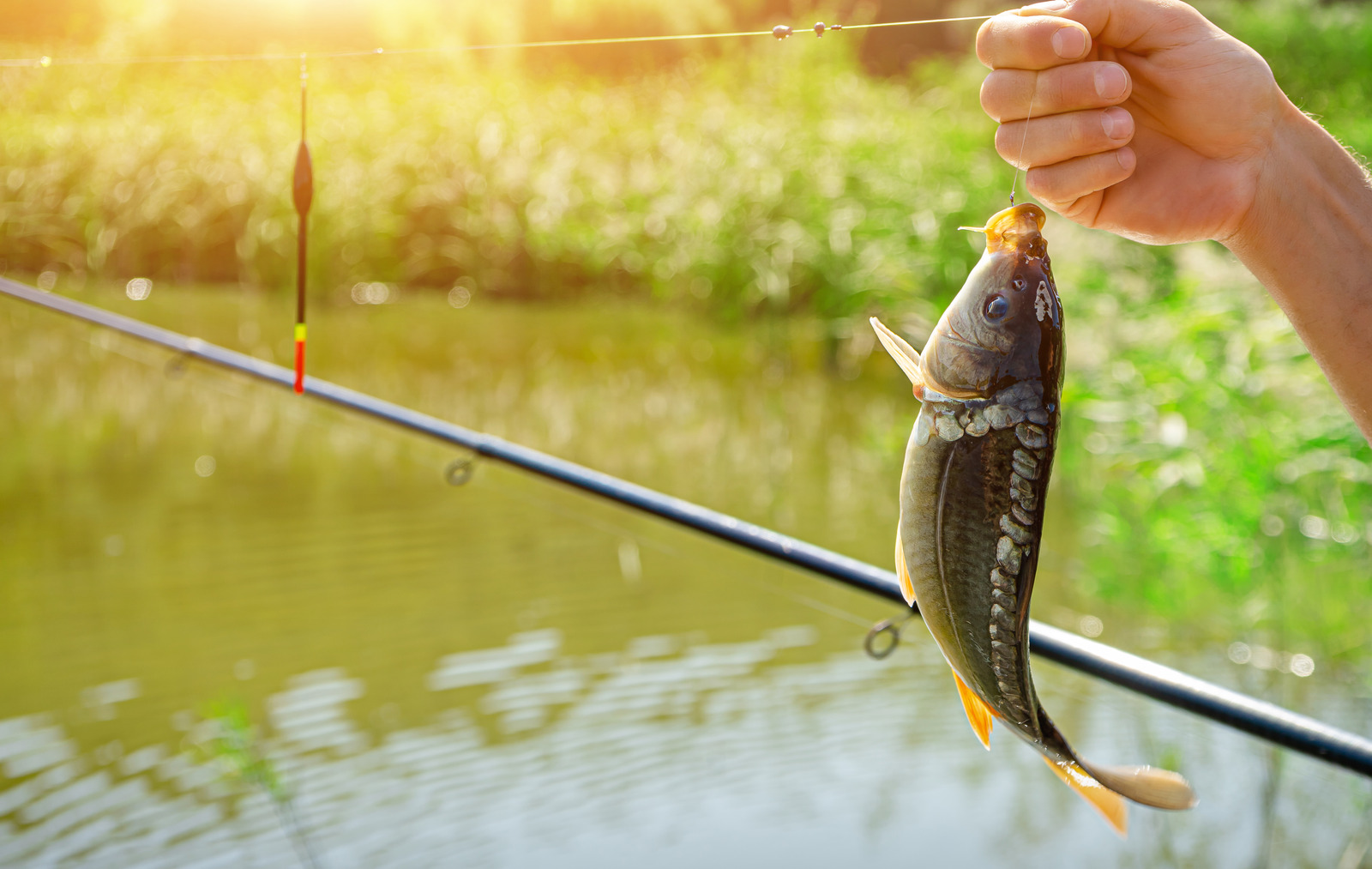What Is A Mirror Carp?

The mirror carp (Cyprinus Carpio), a freshwater fish, is a variation of the common carp.
They are very similar in appearance and care to their more-traditional counterparts, but they have one distinct difference: they have irregular and patchy scaling that looks like mirrors! This type of carp has evolved over time with its environment. The coloration on these fish changes according to what’s around them – for instance, if there is a lot of green algae present, the mirror carp will turn green too. Some people also gets confused between a buffalo fish and a carp but you can learn to see their difference by reading this article.
This article discusses what is a mirror carp, how it came about that mirror carp acquired these irregular scale patterns and why it’s such an interesting thing to know about when caring for these types of fish!
If you are wondering if carp bites humans, read this article here.
What Is A Mirror Carp and Their Feeding Behavior
Mirror carp are herbivorous fish, meaning that they eat mostly plants as their food source. They feed primarily on the bottom of lakes and rivers, where they scavenge for food items such as insects, crustaceans, and algae. They have a suckermouth that helps them to grip onto objects on the bottom of the waterway. They also have a sharp barbel that they use to tear food items into smaller pieces. We also have an article that will tell you what carps eat that you might be interested in. Do you also know that there’s another kind of carp called ghost carp? And you can read about them here in another article.
Other kinds of food that Mirror Carp will eat are:
- Zooplankton (tiny animals that drift in the water)
- Small fish
- Fruit and vegetables (when available)
If you are interested to identify Carp vs Catfish, we have this article here.
Spawning Behavior
Mirror carp, like common carp, spawn in the spring, typically between March and May. They do not build nests like other fish types but instead release their eggs randomly into flowing water. The male mirror carp guard the eggs until they hatch, which takes about three to six days. The offspring remain close to their parent for a few weeks after they hatch, which is known as “Parental care”.
The number of eggs that fish lay depends on the type of fish. Carp, typically lay 100,000 to 300,000 eggs per spawning season.
Habitat
Mirror carp is a freshwater fish and can be found in lakes, ponds, and rivers that contain slow-moving water with plenty of vegetation for them to eat. They are native to Eastern Europe but were introduced into Great Britain as an ornamental fish species during the 1970s and 1980s. Since they reproduce easily, they have become naturalized in many parts of the country.
Mirror Carp’s Genetics
The DNA of a Mirror Carp is 98% similar to that of a common carp (two alternative genes are switched but otherwise they’re the same). This means the two types of fish are closely related and can interbreed, which makes it difficult to determine their population in any given area. In some parts of the world where they have been introduced as ornamental fish, mirror carp were thought to be escaped common carp until genetic testing was done to confirm their identity.
This also means that if mirror carp become established in a new area, they could potentially hybridize with the local common carp populations and create a new invasive species. It is therefore important to keep an eye on any sightings in your area and take steps to eradicate them if necessary.
How To Catch A Mirror Carp
They can be caught by anglers using the same types of fishing equipment used to catch common carp. They can be a challenging fish to catch but they are definitely worth the effort for anglers who enjoy fishing for carp species.
What Rigs & Tackle Should I Use To Catch A Mirror Carp?
Mirror Carp can also be caught by anglers using a range of specialist carp fishing equipment such as:
Bait boat. This is a floating device that holds your bait at the side of the lake or river bank so you can cast out from your position on dry land.
Hair rig. This is a special type of fishing tackle that uses soft bait such as bread or corn to attract the carp. The bait is attached to the hook using a hair-like loop so it doesn’t get taken off by the fish’s teeth when they bite down on it.
Waggler float. This is attached to the line between your hook and a length of fishing line. It is designed so it acts like an underwater bobber, which means you can feel when carp are nibbling at your bait without them taking it off.
Carp rod or waggler pole. This consists of a long rod with a shorter top section known as the waggler pole. The waggler is designed to hold your bait at a specific depth in the water and stop it from getting tangled in weed or debris on the bottom of the lake or river.
What Kind Of Water Does Mirror Carp Live In?
They can be found in lakes, small ponds, and rivers that contain slow-moving water with plenty of vegetation for them to eat.
What Kind Of Bait Should I Use To Catch A Mirror Carp?
They are an aggressive species and will often eat any bait that is thrown into their territory, including:
- Bread (either in crumbs or a whole loaf)
- Corn kernels
- Hook shaped bread pellets like puffed wheat, puffed rice and corn
- Tiny pieces of cheese
- Sausages
- Crayfish (live or dead)
- Worms (either live or dead)
- Anglers have also had success using bait flavoring products such as carp attractant, sweetcorn oil and boilies (see also can dogs eat fishing boilies) to help increase their catch rate.
If you want to know how to grow worms for fishing bait, we have a guide here.
Is mirror carp good to eat?
Mirror Carp is a non-endangered species and can be eaten by humans. Mirror carp tastes similar to common carp and can be cooked in a variety of ways, including frying, baking, grilling and barbecuing. Some people also like to smoke these fish.
What’s the difference between common and mirror carp?
The main difference between common and mirror carp is their scale patterns. They have a silver-green coloration that gives them their name, while common carp are usually a muddy brown color (and have a regular scale pattern). They also have few scales but the scales they do have are reflective like mirrors.
Are Mirror Carp an Invasive Species?
The Mirror carp is an invasive species in some parts of the world, such as Australia and New Zealand. This means that it has been introduced into a location where it is not native and is causing harm to the environment or economy. Some of the ways that this species can be harmful include:
- Eating the food that native fish species rely on, which can impact their populations
- Introducing diseases into waterways that can kill other fish species or make them more susceptible to disease
- Damaging habitats by uprooting plants and stirring up sediment
- Weighing down aquatic vegetation so it cannot photosynthesis (provide energy) properly, which can impact the whole ecosystem
There is currently no evidence that mirror carp are having a negative impact on the environment in North America, but they could still be considered a potential threat. It is important to be aware of their invasive potential and take steps to prevent them from spreading if you do not want them in your area.
In Conclusion
Mirror carp are a non-native, invasive species in many parts of the United States. They can be distinguished from common carp by their silver-green coloration and large reflective spots, and they fight hard when hooked.
As an Amazon Associate, Fishermen's Angle earns from qualifying purchases. We get commissions for purchases made through links in this post.


